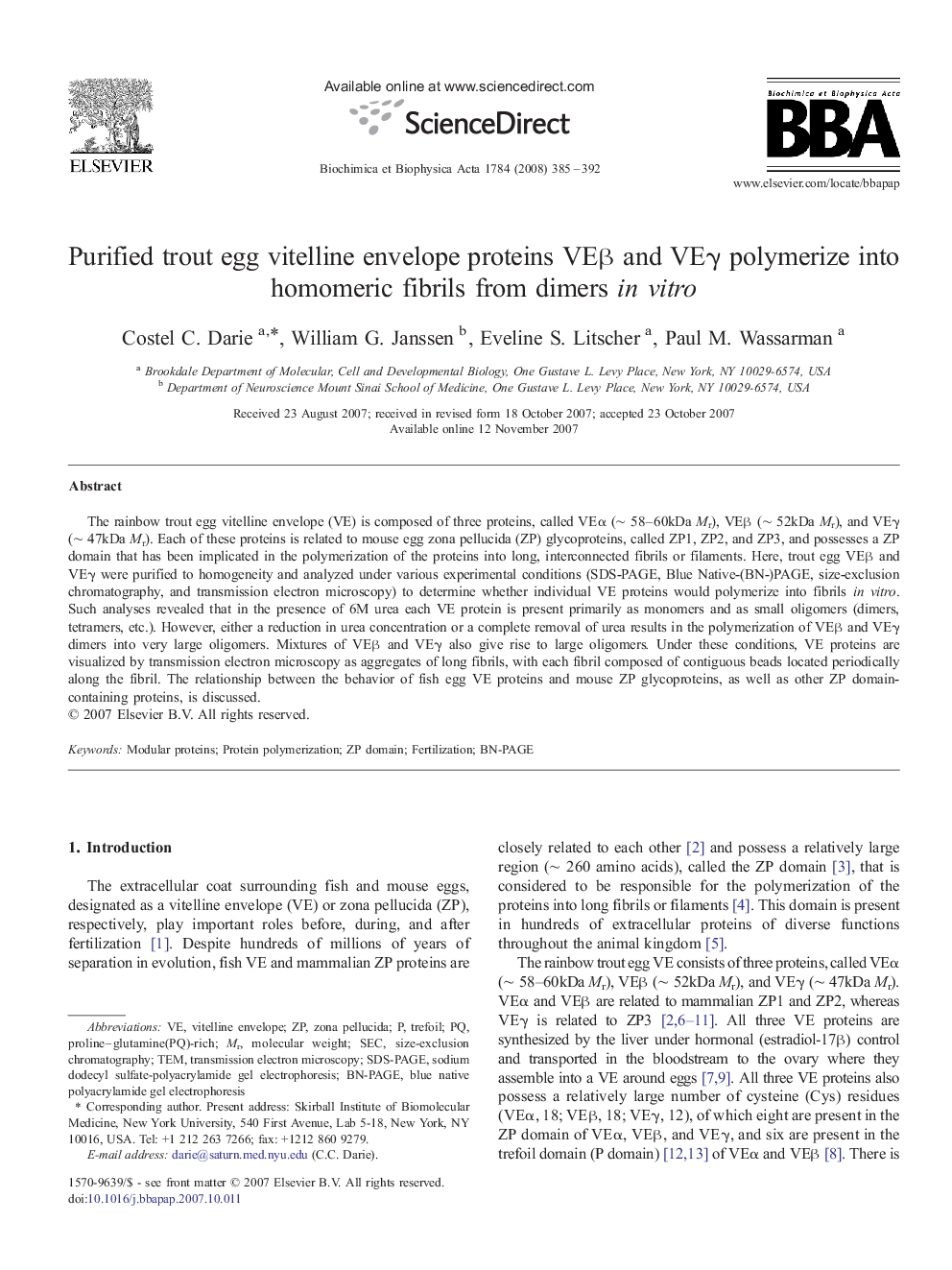| Article ID | Journal | Published Year | Pages | File Type |
|---|---|---|---|---|
| 1179191 | Biochimica et Biophysica Acta (BBA) - Proteins and Proteomics | 2008 | 8 Pages |
The rainbow trout egg vitelline envelope (VE) is composed of three proteins, called VEα (∼ 58–60kDa Mr), VEβ (∼ 52kDa Mr), and VEγ (∼ 47kDa Mr). Each of these proteins is related to mouse egg zona pellucida (ZP) glycoproteins, called ZP1, ZP2, and ZP3, and possesses a ZP domain that has been implicated in the polymerization of the proteins into long, interconnected fibrils or filaments. Here, trout egg VEβ and VEγ were purified to homogeneity and analyzed under various experimental conditions (SDS-PAGE, Blue Native-(BN-)PAGE, size-exclusion chromatography, and transmission electron microscopy) to determine whether individual VE proteins would polymerize into fibrils in vitro. Such analyses revealed that in the presence of 6M urea each VE protein is present primarily as monomers and as small oligomers (dimers, tetramers, etc.). However, either a reduction in urea concentration or a complete removal of urea results in the polymerization of VEβ and VEγ dimers into very large oligomers. Mixtures of VEβ and VEγ also give rise to large oligomers. Under these conditions, VE proteins are visualized by transmission electron microscopy as aggregates of long fibrils, with each fibril composed of contiguous beads located periodically along the fibril. The relationship between the behavior of fish egg VE proteins and mouse ZP glycoproteins, as well as other ZP domain-containing proteins, is discussed.
